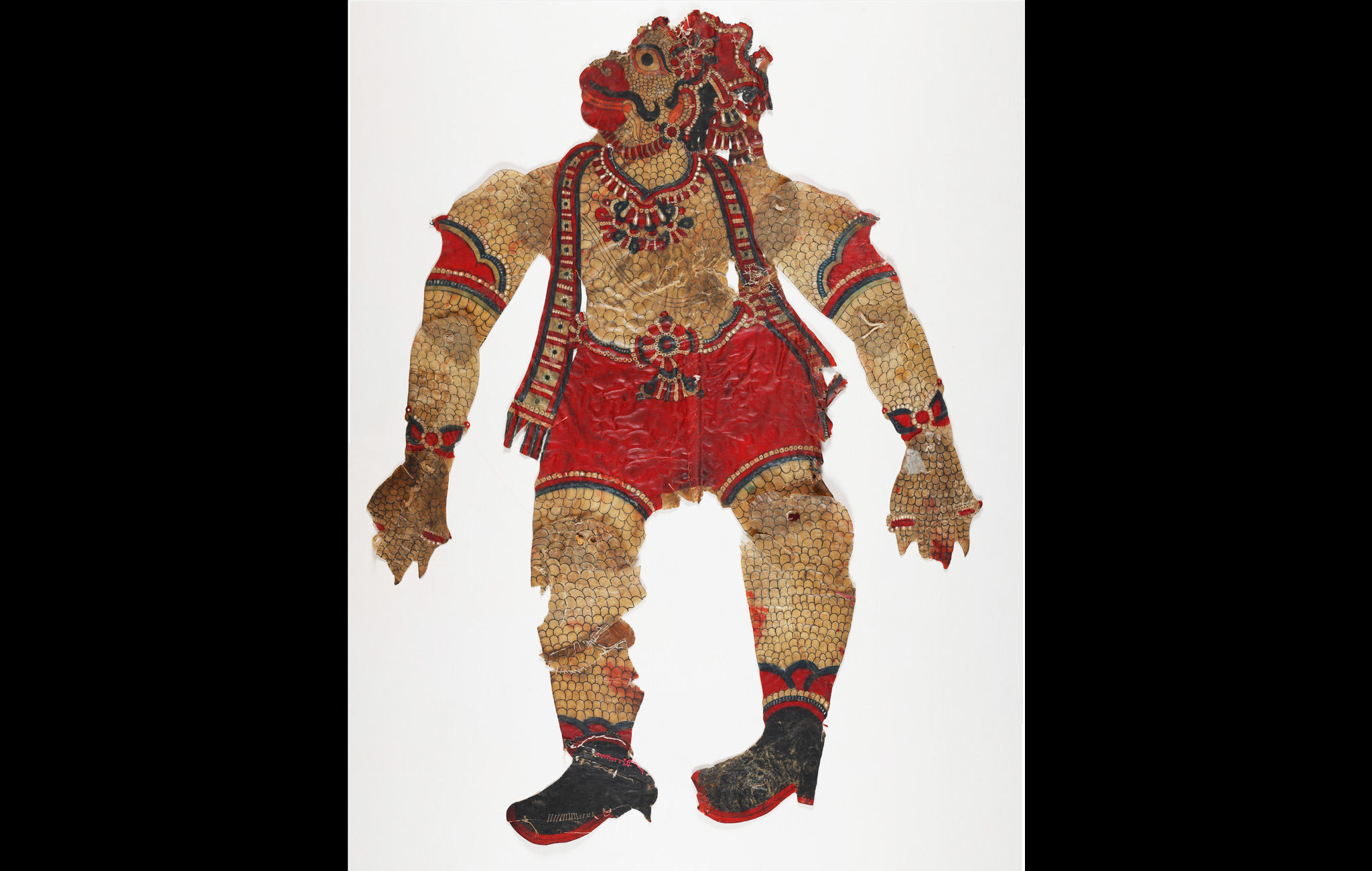
This shadow puppet of Matsya Vallabha is from Tholu Bommalaata, puppet tradition of Andhra Pradesh in India. Here, tholu means leather, bommalu means puppets and aata means dance.
Matsya Vallabha in Valmiki’s Ramayana is the son of Hanuman. When Hanuman was flying across the sea after burning Lanka with his tail, a drop of sweat fell into the water which was consumed by a fish, who gave birth to Matsya Vallabha, hence the scaly skin.
He was found by Ahiravana (King of Patala) who gave him the responsibility of guarding the doors of Patala. During Rama’s war with Ravana, Rama and Lakshmana were kidnapped and taken to Patala. Hanuman’s attempt to save them led him to meet his son, Matsya Vallabha. After defeating Ahiravana, Rama and Lakshmana advised Hanumana to make Matsya Vallabha, the king of Patala. In some regional retellings of the Ramayana, he is known as ‘Makaradhwaja’, where his mother is a crocodile instead of a fish.
One of the versatile proponents of this Tholu Bommalaata is Sindhe Chithambara Rao. He is a National award-winning puppeteer who lives in the village of Dharmavaram in Andhra Pradesh. Chithambara Rao’s great-grandfather, Nayanappa Rao, was the first puppeteer in the family. He migrated from Solapur district in Maharashtra to Kolar district in Karnataka and developed his puppetry skills by building relationships with the local puppeteers. From the age of 8, Chithambara Rao trained under his father in the art of shadow puppetry, carefully observing his father, elder sister and brother synchronise the puppets with their storytelling melodies. Today, Chithambara Rao’s troupe Chaya Nataka Brundam has performed in cultural forums across India, Europe, South America, Egypt, and Oman.
To read more about Tholu Bommalaata, click here.
Title
Matsya VallabhaPeriod
late 20th century - early 21st centuryArtist
Sindhe Chithambara RaoMedium
Vegetable and Poster colour on animal hideDimensions
118 cm x 49 cmAccession No.
2019.18.23Genre: Indigenous & Tribal Art
